Samsung Horticulture LEDs
The first Samsung LEDs built on large area LED boards for plant lamps were the LM561C. Equipped with the new flip-chip technology, the successor LM301B was able to increase the efficiency levels for white LEDs once again, thus finally heralding the triumphant advance of mid-power LEDs in the horticulture sector.
With the growing popularity of Samsung's LED products among growers, it is no wonder that the company is trying to further develop this market. This was first indicated when Samsung published the PPF values for LM301B (more on this later). From then on it didn't take long - and the semiconductor manufacturer from South Korea announced its own horticulture version of the LM301 design in spring 2019.
But now comes the exciting question: LM301H vs LM301B - which LED is better for plant lamps?
Update from May 2021
Samsung has broken it down. Which is better, LM301H or LM301B? Those who want to know immediately can read more directly here.
LM301H - This is what the manufacturer advertises:
- Photosynthetic photon efficiency of 3.10 µmol/J at 65 mA (applies to the cold white 5000K version)
- Anti-sulfur coating
According to the data sheet, the LM301H LED has the same electrical and optical characteristics as the LM301B variant. It is available in different colour temperatures from 2200K to 6500K and in colour rendering index CRI 70-90.
Another variant with the designation LM301H One is now also available.
The About the LM301H One are rather average:
- Photosynthetic photon efficiency of 2,75 µmol/J at 65 m
- Single package solution for leafy vegetables
This special variant has a modified spectrum, which we will analyse in more detail in another article. Noticeable is the low power in the blue range, while the green-yellowish to red spectrum is more strongly weighted. According to Samsung, this should make it possible to grow lettuce well. However, the efficiency is disappointing, which doesn't do justice to the LM301 series.
LM301H vs. LM301B: a question of efficiency?
Since Samsung announced the new LED called LM301H, rumors and speculation have been spreading about the new product. In the DIY LED community there are more and more voices claiming that the new model is merely a label change. They say that the chips with the "H" are basically the same as those with the "B".
There is indeed much to suggest that For example, there is no significant difference to be seen in the data sheets of the two LM301 variants. A glance at Samsung's press releases nevertheless raised hope that the technology of the Horticulture version contains a fundamental innovation. Or is it just a listing of plant lighting specifications and a sulphur-resistant coating?
Official Samsung statements point to higher efficiency
After Samsung recognized that its LEDs for plant lighting are very competitive, the PPF / PPE values for the "normal" flagship, the LM301B, will first be released in 2018. The stated 2.92 µmol/J are impressive!
"[...] Samsung has added horticulture specifications to its mid-power packages - LM301BLM561C, and two linear modules - Q-series and H inFlux. These LED component families now include PPF values of 0.52μmol/s (65mA)0.49μmol/s (65mA), 24μmol/s (0.45A, 21.9V) and 114μmol/s (1.38A, 46.9V), respectively.
In addition, the white LED packages and modules feature extremely high light efficacy of 2.92 micromoles per joule (μmol/J) (65mA)2.72μmol/J (65mA), 2.72μmol/J (0.45A, 21.9V) and 1.76μmol/J (1.38A, 46.9V [...]".Source: Samsung | Highlights of Crescience Press release
But not quite a year later it is announced that the LM301H - the "specialized solution" for horticulture - even achieves 3.1 µmol/J!
"At 3.10 micromoles per joule (μmol/J), the newly introduced LM301H now features the highest photon efficacy** among today's mid-power white LED packages.
Samsung is able to achieve this advancement in photon efficiency by optimizing the chip's light-emitting layer to convert electrical energy into photons with greater efficiency, while an improvement in chip structure minimizes light loss, delivering more light to plants. Titanium dioxide around the chip also ensures higher durability when exposed to agricultural chemicals.Source: Samsung | Highlights of Crescience Press release
Samsung LM301B vs. LM301H under test
How did this increase of 6% come about? For an objective comparison, extensive measurements in an integrating sphere are necessary. However, a simple PPFD test can already provide a small clue and fortunately we are able to do this ourselves.
With the Apogee SQ-520 PPFD sensor and a small box, we wanted to compare the different Samsung LEDs under the most reproducible conditions possible.
In the first generation FLUXengine, the proven LM301B are installed, while from 2020 we will be using the FLUXengine v2 on the new LM301H.
In the comparison we simply let the first generation of the FLUXengine compete against the FLUXengine v2: 140x LM301B against 140x LM301H.
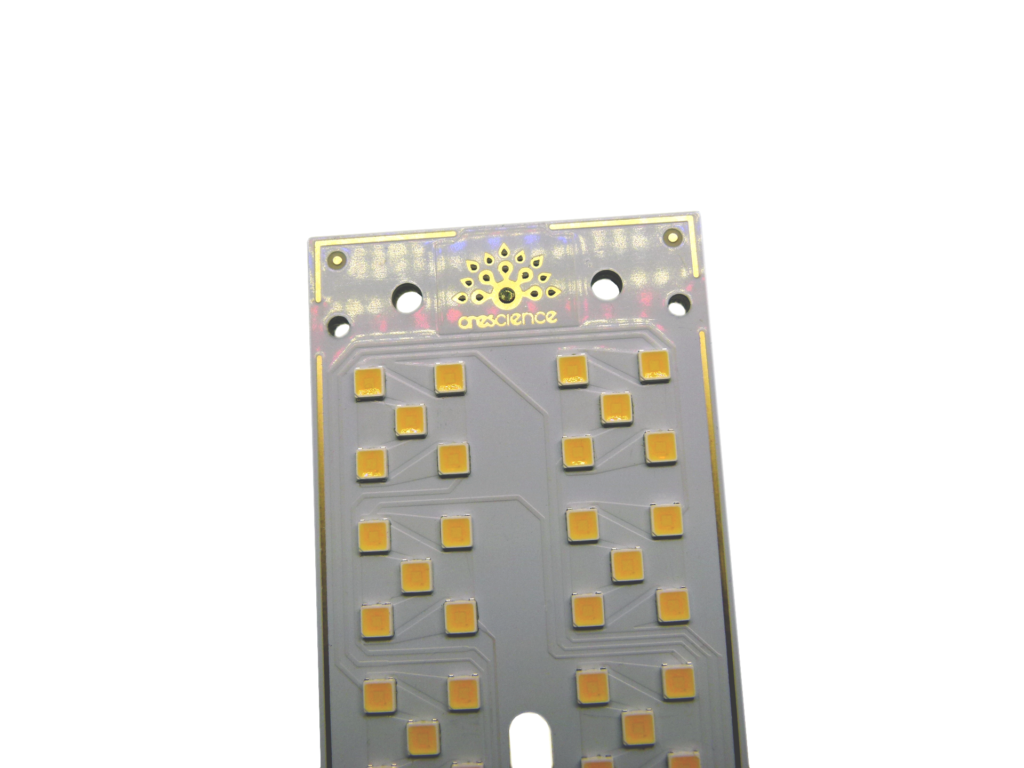
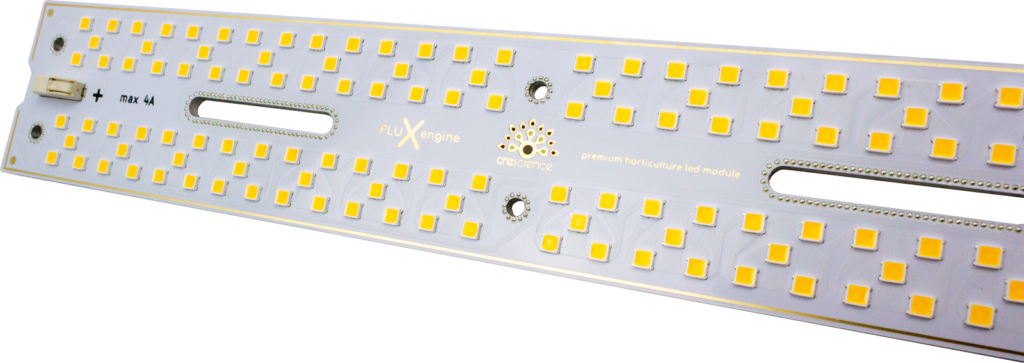
By the way, the third generation of our LED module is now available: FLUXengine Evo. Of course, we continue to use Samsung LM301H in the SL Bin.

Advantage for the newcomers?
In fact, a lead of the FLUXengine v2 could be determined in the test.
With a current of 1000 mA the sensor of the FLUXengine showed 667 µmol, while the display of the FLUXengine v2 even showed 698 µmol. In addition, the FLUXengine with LM301B dropped a little more voltage, so that the bottom line was a higher efficiency of almost 5%.
The sorting makes the difference
However, this 5%ige difference is not necessarily due to the better LM301H. The first generation FLUXengines were equipped with unsorted LM301B. For the successor we decided to use the higher quality SL-Bin sorting. The difference corresponds almost exactly to the measured 5 %s! The "average" SK Bin delivers an average of 37 lm at 65 mA, while the SL Bin delivers an average of 39 lm (unfortunately only lumen values are given).
Which Samsung LED chip is better suited for grow LEDs?
We could only measure with simple test equipment, so the results are subject to various uncertainties. At first glance, however, it is still not possible to confirm that the LM301H is the better choice for grow LEDs.
The difference between our LM301B and LM301H is probably due to the stricter sorting and not to any particular innovation by Samsung. How the contradictory press releases come about remains a mystery.
But there is one good thing we can gain from this: It has been confirmed that the LM301H SL Bin are extremely efficient LEDs, which in this case even surpassed the very good LM301B.
The bottom line is that when comparing Samsung LEDs, it makes more sense to look for the highest possible bin than for the suffix -H or -B. In other words: LM301H and LM301B = both super! SL Bin = even better!
You can use our FLUXengine with Samsung LM301H in SL Bin now also buy on Amazon by the way.
Update: LM301 Evo is coming - the confusion about the two LM301 types is over
In fact, it has been confirmed that the introduction of the LM301H only serves to differentiate the "horticulture" from the general lighting market. Technically, it is the same product. As shown in our tests, it is only the better binning that matters more. Special features such as increased sulphur resistance are also characteristics of both product types.
In future, however, specialised spectra will be marketed under the LM301H designation, as was already the case with the LM301H One. The latest product is the LM301H Evo. You can find out all the details in the following article:
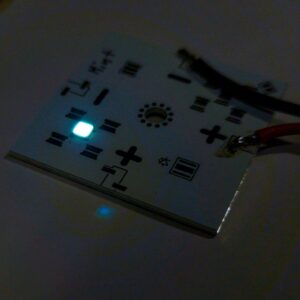
LM301H Evo - new Horticulture LEDs
With its new LM301H Evo Samsung continues what it has started with LM301B and LM301H mid-power LEDs which are the dominating in the market for high efficiency grow lights. Now a new chapter follows with the LM301H Evo, which allows us to develop some great new solutions for grow lighting.


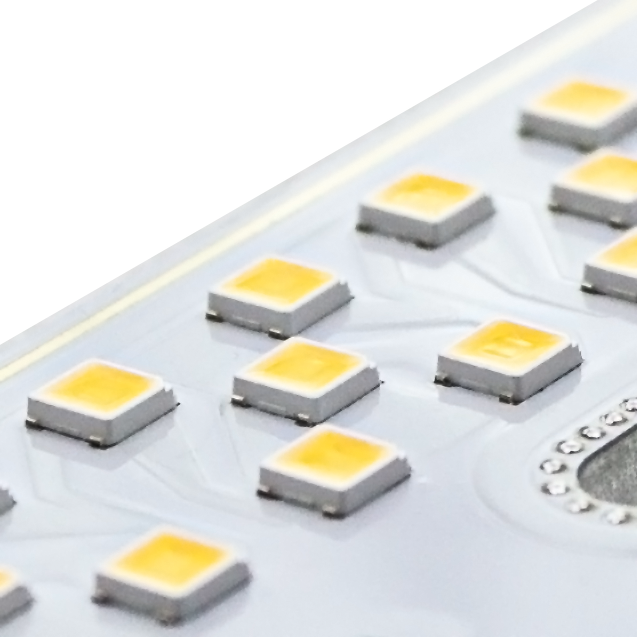

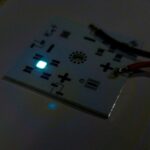
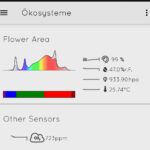

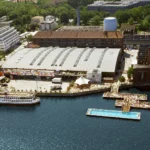
18 thoughts on “Samsung LM301H vs. LM301B – die besten LED Chips für Pflanzenbeleuchtung 2021”
Pingback: Samsung LM301B LED Chip | Crescience
i would like to know if there is a 1 watt version of lm301h or lm301b and if they are better than the .3 or .4 or half watt chips ,or if they are known to burn out too fast?
Hi Aaron, there are no 1 W versions of LM301H or B. Samsung offers a few other LEDs in the same package as 1 W versions. They basically put two chips in one case, e.g. LM301D. Those are less efficient though.
Hi,
I have a question, I live in Europe and want to buy these DIY boards with LM301H, but the manufacturere claims they are 240 Watt. They have 2 boards on em with 308 LM301H so in total 618 leds. Is it true what they are claiming ? Cause when I'm making the calculation 618 x 0,3 W = 185,4 W
Thanks !
Hi, Eind,
We are in Europe, too! Germany to be accurate 😉 I can tell you that much - the LM301B/H is rated for 200 mA. Under test conditions they can have a forward voltage of more than 2.9 V. Thus you can say as a rule of thumb that the max. power disspation of each chip is 0.58 W (under certain conditions!). But 240 W on 616 LEDs is no problem.
Please understand that we don't accept links to competitors products here.
Best regards and a happy new year,
Your Crescience Team
Hi,
Thanks for your fast reply, I didn't know that you sell products too ! Im sorry for the link. I just found this article on Google and didn't look any further on your site. But the products you sell look great!
Can I ask maybe some question regarding the leds you sell?
Thanks already !
Best Regards,
Hi, Eind,
no worries 🙂
Sure, just hit the bubble on the bottom right for direct contact or leave a comment with your questions.
Best regards
In following along with this line of thought; I would then assume the minimum is 2.7v x 65ma = .176w
and maximum is 2.9v x 200ma = .58w. which you could adjust in that range.
Samsung specs. the lumen and ppf at the 65ma and these both go up with the current but are not linear. (the efficiency drops) Is there a chart to know what you are going to get at the higher currents.
I see other LED MFG's have calculators. And I keep reading blog strings where everyone seems to know this but me ? Do you have a chart or graph. (for the LM301H that is)
Thanks
Terry
Hi, Terry,
yes you are right. Please note that individual chips may differ in output and forward voltage so these assumptions are never 100% accurate in practice. For PPF vs. current chart please check our LED modules' data sheets.
We also have our Grow LED Wizard where you can configure your system and calculate PPF efficacy according to your current inputs. It's only available in German at the moment, but it should be easy to understand what everything stands for as there are mostly metrics 😉
For support please drop us a line via Whatsapp or Email.
Best regards,
Your Crescience Team
Bonjour la puce montage en surface sur circuit imprimé ?
Oui!
Hola que tal buenos días. Estos LEDs es verdad que no necesitan tanta disipación como otros tipos de LED? En concreto. Estoy por comprar una plancha de 3 milímetros de grosor duplicando la superficie de las tiras led... (4 tiras de 64 leds cada una) y necesito saber si no la estoy liando muchas grafias
Hola Manuel, los LM301H y LM301B, así como el nuevo LM301H Evo se encuentran entre los LEDs más eficientes del mercado. Esto significa que la pérdida de potencia es bastante baja. Para obtener asesoramiento sobre los LED y los disipadores de calor, póngase en contacto con nuestro servicio de atención al cliente.
Would these light be suitable or viable in commercial light-supplemented greenhouse production?
Hey Bertie, absolutely yes! They deliver PAR with high effiency, thus these LEDs are excellent for any horticulture application.
hola les queria pedir ayuda, me ofrecen un led bastante bueno de 300w pero tiene chips LM301D el cual desconozco que tan bueno sea para horicultura. solo conosco los LM301H que son los mas utilizados, no se si me pudiesen orientar si adquiri losLM301D o LM301H aunque este ultimo es de 240w
saludos
Ya hemos hablado de esto en Whatsapp - sólo para completar: El LM301D probablemente utiliza el mismo chip que el LM301B y LM301H. Sin embargo, el rendimiento de fotones es menor debido a que el paquete es más barato. Lo más importante sigue siendo prestar atención a una bin alta. Las diferencias entre el bin superior y el inferior son de hasta un 10%.
have tested both, seem similar during grow